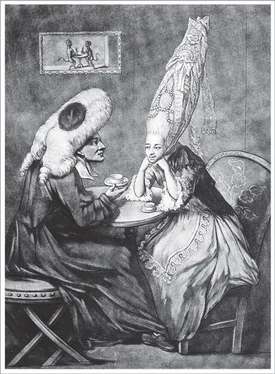Bill Bryson - At Home
Здесь есть возможность читать онлайн «Bill Bryson - At Home» весь текст электронной книги совершенно бесплатно (целиком полную версию без сокращений). В некоторых случаях можно слушать аудио, скачать через торрент в формате fb2 и присутствует краткое содержание. Жанр: Старинная литература, на английском языке. Описание произведения, (предисловие) а так же отзывы посетителей доступны на портале библиотеки ЛибКат.
- Название:At Home
- Автор:
- Жанр:
- Год:неизвестен
- ISBN:нет данных
- Рейтинг книги:4 / 5. Голосов: 1
-
Избранное:Добавить в избранное
- Отзывы:
-
Ваша оценка:
- 80
- 1
- 2
- 3
- 4
- 5
At Home: краткое содержание, описание и аннотация
Предлагаем к чтению аннотацию, описание, краткое содержание или предисловие (зависит от того, что написал сам автор книги «At Home»). Если вы не нашли необходимую информацию о книге — напишите в комментариях, мы постараемся отыскать её.
At Home — читать онлайн бесплатно полную книгу (весь текст) целиком
Ниже представлен текст книги, разбитый по страницам. Система сохранения места последней прочитанной страницы, позволяет с удобством читать онлайн бесплатно книгу «At Home», без необходимости каждый раз заново искать на чём Вы остановились. Поставьте закладку, и сможете в любой момент перейти на страницу, на которой закончили чтение.
Интервал:
Закладка:
Brummell’s fall from grace was abrupt and irreversible. He and the Prince of Wales had a falling out and ceased speaking. At a social occasion, the prince pointedly ignored Brummell and instead spoke to his companion. As the prince withdrew, Brummell turned to the companion and made one of the most famously ill-advised remarks in social history. “Who’s your fat friend?” he asked.
Such an insult was social suicide. Shortly afterward Brummell’s debts caught up with him and he fled to France. He spent the last two and a half decades of his life living in poverty, mostly in Calais, growing slowly demented but always looking, in his restrained and careful way, sensational.
II
At just the time that Beau Brummell was dominating the sartorial scene in London and beyond, one other fabric was beginning to transform the world, and in particular the manufacturing world. I refer to cotton. Its place in history can hardly be overstated.
Cotton is such a commonplace material now that we forget that it was once extremely precious—more valuable than silk. But in the seventeenth century, the East India Company began importing calicoes from India (from the city of Calicut, from which they take their name), and suddenly cotton became affordable. Calico was then essentially a collective term for chintzes, muslins, percales, and other colorful fabrics, which caused unimaginable delight among Western consumers because they were light and washable and the colors didn’t run. Although some cotton was grown in Egypt, India dominated the cotton trade, as we are reminded by the endless numbers of words that came into English from there: khaki, dungarees, gingham, muslin, pajamas, shawl, seersucker , and so on.
The sudden surge of Indian cotton pleased consumers, but not manufacturers. Unable to compete with this wonder fabric, European textile workers bayed for protection almost everywhere, and almost everywhere they received it. The importation of finished cotton fabrics was banned in much of Europe throughout the eighteenth century. Raw cotton could be imported, which provided a powerful incentive to the British cloth industry to exploit it. The problem was, cotton was very hard to spin and weave. The solution to that problem is called the Industrial Revolution.
Turning bales of fluffy cotton into useful products like bedsheets and blue jeans involves two fundamental operations: spinning and weaving. Spinning is the process by which short lengths of cotton fiber become long threads; the spinner adds short fibers a little at a time and gives them a twist—the very process mentioned with string. Weaving involves interlacing two sets of strings at right angles to form a mesh. The machine on which cloth was woven was a loom. All that a loom does is hold one set of strings tight so that a second set can be fed through the first to make a weave. The tight set of strings is called the warp. The second, “active” set is called the weft—which is simply an old form of the verb weave . Most everyday household cloths—sheets, handkerchiefs, and the like—are still made from this basic, straightforward type of weaving.
Spinning and weaving were cottage industries that supported large numbers of people. Traditionally, women spun and men wove. Spinning, however, took a lot longer than weaving, and the disparity grew even worse after 1733 when John Kay, a young man from Lancashire, invented the flying shuttle—the first of the breakthrough innovations that the industry required. Kay’s mobile shuttle doubled the speed at which weaving could be performed. Spinners, already unable to keep up, fell ever more hopelessly behind, so problems developed all along the supply line, with enormous economic stresses for all concerned.
According to the story as traditionally recounted, weavers and spinners alike grew so furious with Kay that they attacked his home and he had to flee to France, where he died a pauper. The story is repeated in most histories even now with “dogmatic fervour,” in the words of the industrial historian Peter Willis, but in fact, Willis insists, there is no truth in it at all. Kay did die poor, but only because he didn’t manage his life very well. He proposed to manufacture the machines himself and rent them out to mill owners, but he set the rental so high that no one would pay it. Instead his device was widely pirated, and he spent all his funds unsuccessfully fighting for compensation through the courts. Eventually, he went to France, hoping—vainly—to find more success there. He lived almost another fifty years after his invention. He was never attacked or driven away.
A generation would pass before anyone devised a solution to the spinning problem, and it came from an unexpected quarter. In 1764, an illiterate weaver from Lancashire named James Hargreaves devised an ingeniously simple device known as the spinning jenny, which did the work of ten spinners by incorporating multiple spindles. Not much is known about Hargreaves beyond that he was born and grew up in Lancashire, married young, and had twelve children. There is no known likeness. He was the poorest and unluckiest of all the major figures of the early Industrial Revolution. Unlike Kay, Hargreaves really did experience trouble. A mob of angry locals came to his house and burned twenty half-finished jennies and most of his tools—a cruel and desperate loss to a poor man—and so for a prudent period he stopped making jennies and went into bookkeeping. The jenny, incidentally, was not named after his daughter, as is often stated; jenny was a northern word for engine .
Hargreaves’s machine doesn’t look like much in illustrations—it was essentially just ten bobbins on a frame, with a wheel to make them rotate—but it transformed Britain’s industrial prospects. Less happily, it also hastened the introduction of child labor because children, nimbler and smaller than adults, were better able to make running repairs to broken threads and the like in the jenny’s more inaccessible extremities.
Before his invention, homeworkers spun five hundred thousand pounds of cotton in England every year by hand. By 1785, thanks to Hargreaves’s machine and the refined versions that followed, that figure had leaped to sixteen million pounds. Hargreaves, however, didn’t share in the prosperity that his machines created, in large part because of the machinations of Richard Arkwright, the least attractive, least inventive, but most successful of all the figures of the early Industrial Revolution.
Like Kay and Hargreaves, Arkwright was a Lancashire man—where would the Industrial Revolution have been without Lancashire men?—born in Preston in 1732, which made him eleven years younger than Hargreaves and nearly thirty years younger than Kay. (It is as well to remember that the Industrial Revolution wasn’t a sudden explosive event, but more a gradual unfolding of improvements over many lifetimes and in lots of different fields.) Before he became a man of industry, Arkwright was a publican, a wigmaker, and a barber-surgeon with a speciality in pulling teeth and bleeding those who were unwell. He seems to have gotten interested in cloth production through a friendship with another John Kay—this one a clockmaker who was no relation to the John Kay of the flying shuttle—and with his help began to pull together all the machinery and components necessary to bring the whole of mechanical cloth production under one roof. Arkwright was not a man troubled by a lot of scruples. He stole the rudiments of the spinning jenny from Hargreaves without hesitation or remorse (or of course compensation), wriggled out of business deals, and abandoned friends and partners whenever it became safe or profitable to do so.
He did have a genuine knack for making mechanical improvements, but his real genius was in turning possibilities into realities. He was an organizer—a hustler, really, but a very, very good one. Through a combination of hard work, luck, opportunism, and icy ruthlessness, he built up, for a short but extremely lucrative time, a virtual monopoly on the cotton business in England.
Читать дальшеИнтервал:
Закладка:
Похожие книги на «At Home»
Представляем Вашему вниманию похожие книги на «At Home» списком для выбора. Мы отобрали схожую по названию и смыслу литературу в надежде предоставить читателям больше вариантов отыскать новые, интересные, ещё непрочитанные произведения.
Обсуждение, отзывы о книге «At Home» и просто собственные мнения читателей. Оставьте ваши комментарии, напишите, что Вы думаете о произведении, его смысле или главных героях. Укажите что конкретно понравилось, а что нет, и почему Вы так считаете.












